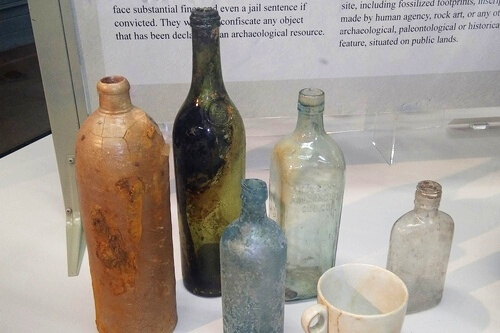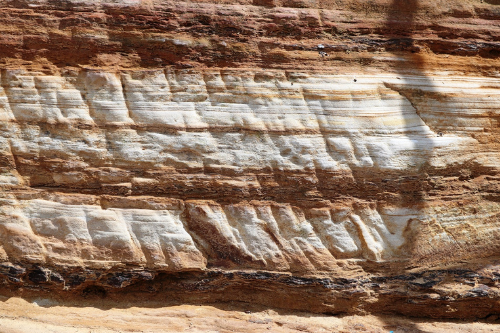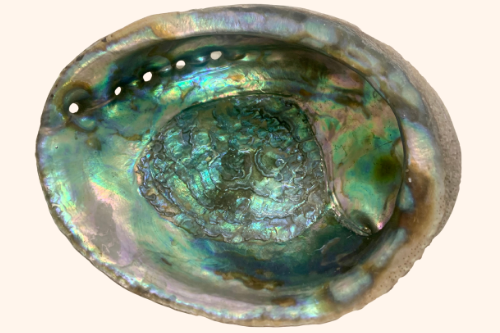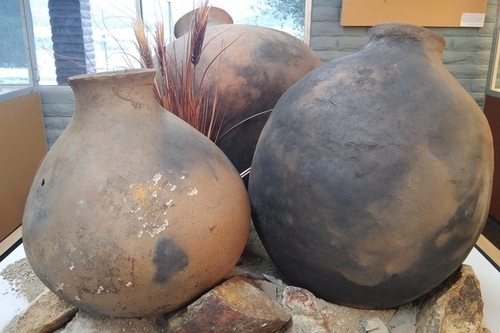
The Wonderful World of Southern California Ceramics
The Wonderful World of… is a monthly blog focusing on some of the many themes, concepts, and sub-disciplines related to the fascinating world of Southern Californian archaeology.
Introduction
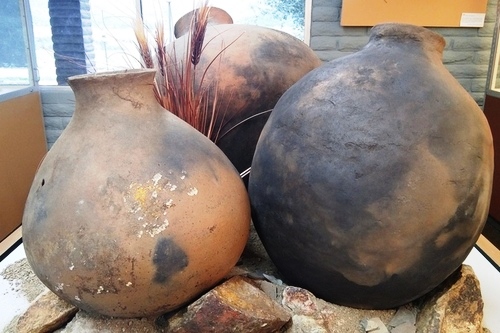
Throughout history, humans around the world have used clay to build shelters, hold water, store food, and even to create art – it is a durable substance still used by many cultures today. Southern California pottery and ceramic production helps archaeologists determine many factors regarding prehistoric cultures like changing technologies, trade networks, and settlement patterns. It also can be useful for dating archaeological sites. While it is still debated, ceramic production is thought to have come to San Diego around 900 CE and to the Imperial Valley around 1000 CE.
Types of Pottery in Southern California
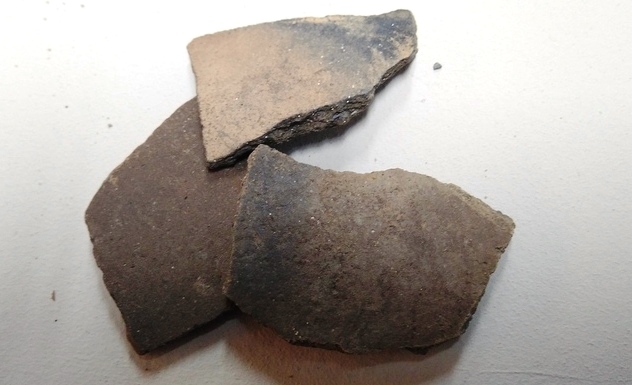
There are three main types of pottery commonly found in the area: Tizon Brown Ware, Colorado (or Desert) Buff Ware, and Salton Brown Ware. Tizon Brown Ware and Colorado Buff Ware are the two types typically found in San Diego County. Tizon is common in the mountain and coastal regions while Colorado Buff Ware is formed from clays found at previous lake or river sites in Imperial County. Brown Ware is medium brown, typically with black cloudy spots created during firing. Buff Ware is lighter with a more reddish or pinkish color. Brown Ware tends to be darker in color than Buff Ware.
How Were Ceramic Vessels Used?
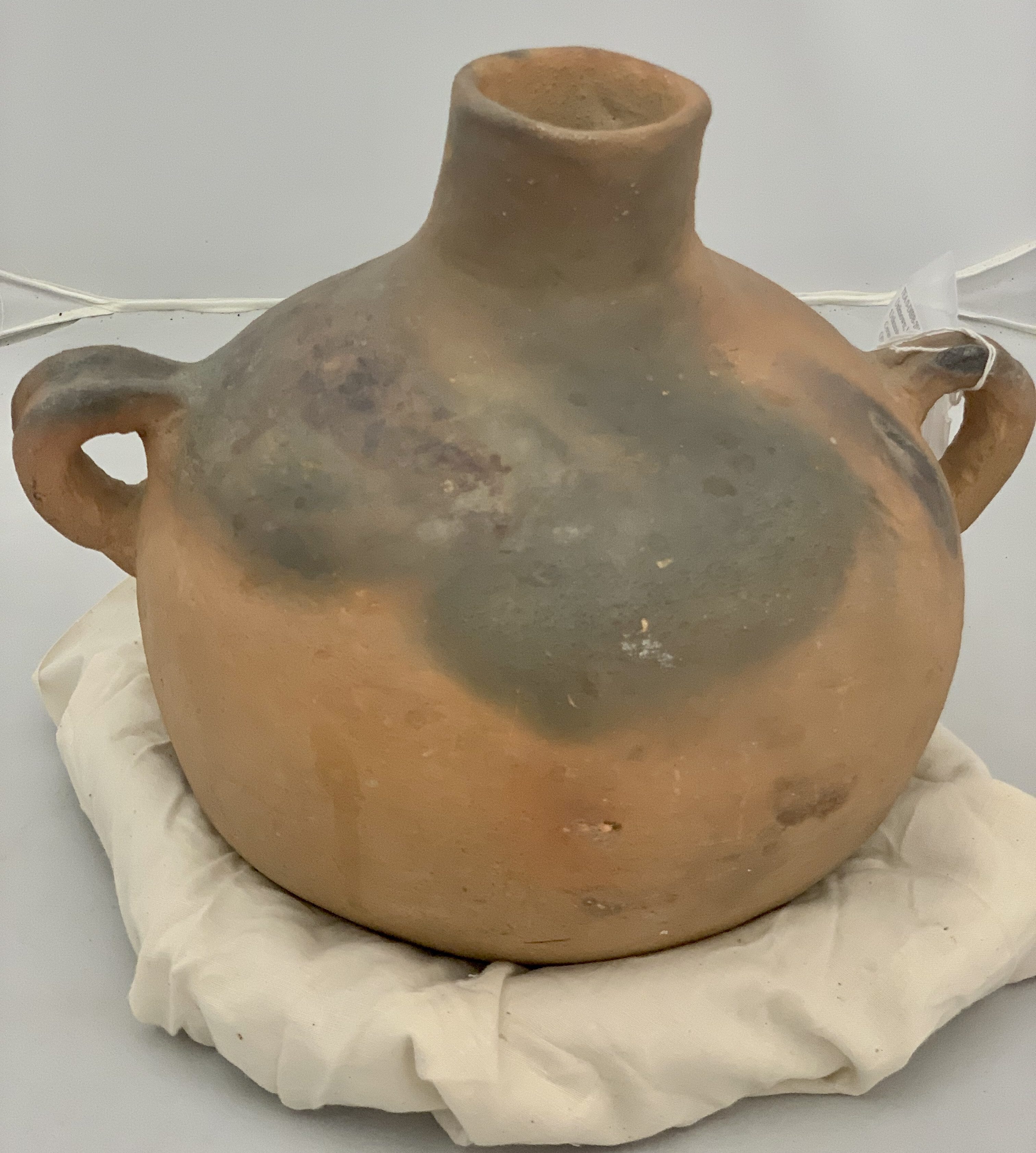 Ceramic vessels made great storage containers. The clay material they were made from was durable and kept pests out. They were water resistant and could help prevent evaporation. Shapes of ceramic vessels varied. Large vessels were often used for long term storage, medium for short term storage, and small (which are rarely found) were used for canteen-like purposes such as carrying water and food. The larger vessels would be hidden away in caves or buried in the ground for longer term safe keeping. Vessels used for water storage can last as cooling mechanisms for about two years; then salts begin to penetrate the clay, and they no longer efficiently cool the water. The same clay was also used to make beads, pipes, and pendants, and these items are helpful in understanding past trade and settlement patterns.
Ceramic vessels made great storage containers. The clay material they were made from was durable and kept pests out. They were water resistant and could help prevent evaporation. Shapes of ceramic vessels varied. Large vessels were often used for long term storage, medium for short term storage, and small (which are rarely found) were used for canteen-like purposes such as carrying water and food. The larger vessels would be hidden away in caves or buried in the ground for longer term safe keeping. Vessels used for water storage can last as cooling mechanisms for about two years; then salts begin to penetrate the clay, and they no longer efficiently cool the water. The same clay was also used to make beads, pipes, and pendants, and these items are helpful in understanding past trade and settlement patterns.
How Were Ceramic Vessels Created?
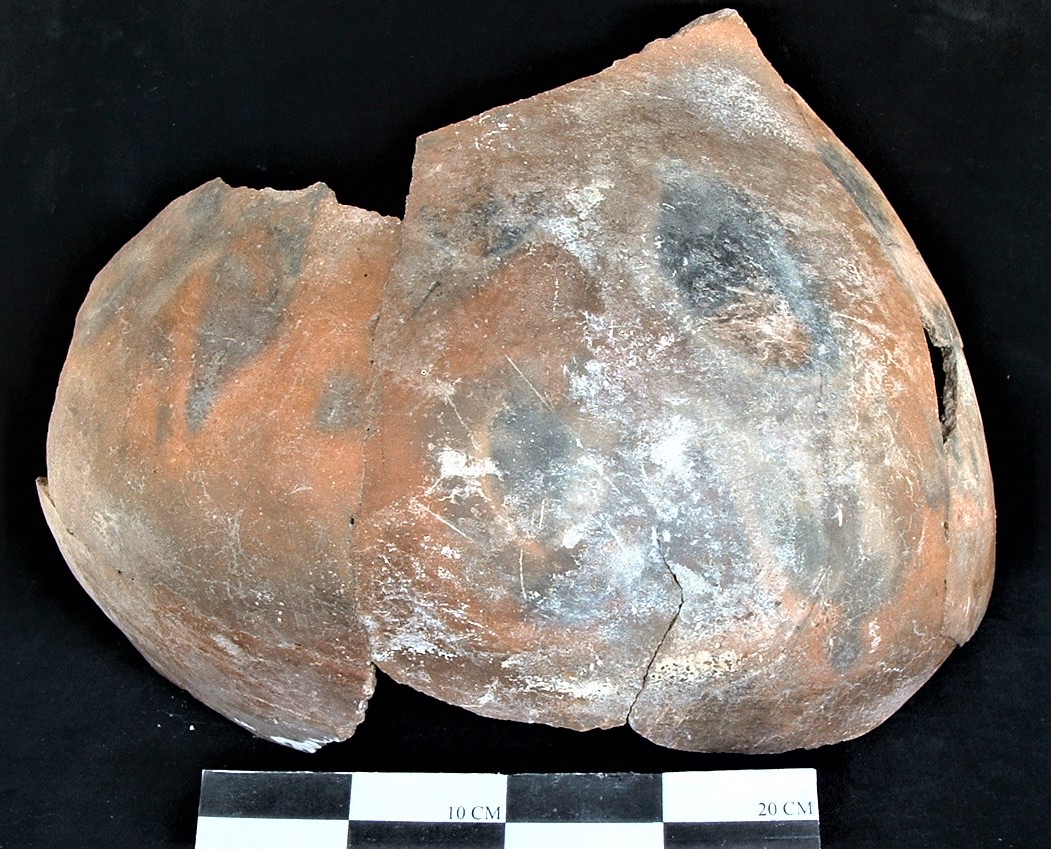
Often, the clay that is used in the creation of ceramic vessels is composed of silica, water, and alumina. When the clay is wet, it is moldable and can be used to form the vessel into a desired shape. When extreme heat is added during the firing process, the clay hardens as the water evaporates from the composition. The Kumeyaay tradition of clay production and techniques was passed down from mother to daughter. Clay source locations were kept secret.
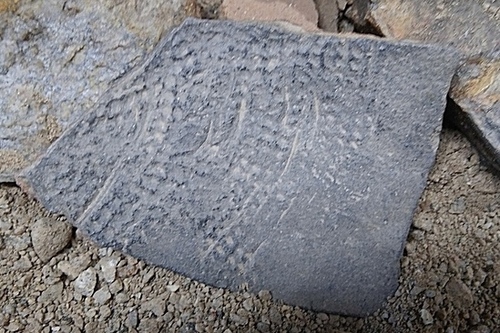
One of the more common techniques used in ceramic vessel creation in Southern California was the paddle and anvil technique. Beginning with the bottom, an older vessel or basket would serve as the mold and a rock or clay anvil, was used to press the outside until the desired shape was achieved. The potter’s wheel was not used in North America so these resources were made by hand. When looking closely, many times these ceramics contain evidence of basket impressions and fingerprints.
Sherds
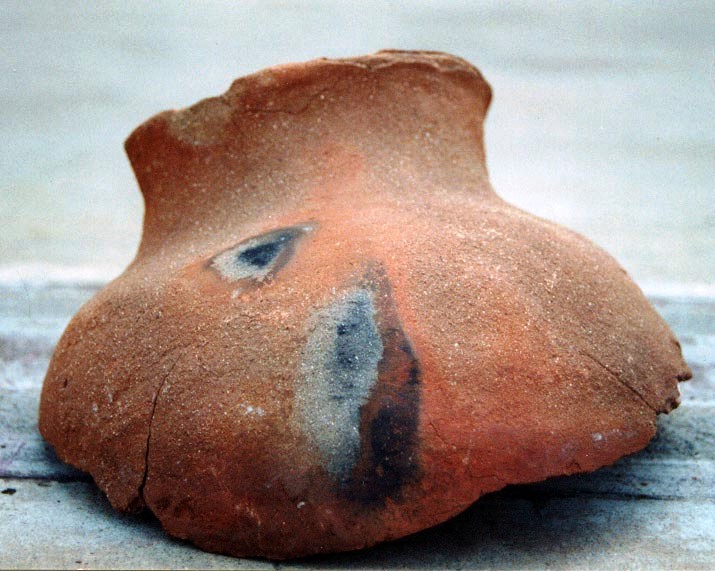 Sherds, or ceramic vessel fragments, are found all over Southern California sites, and the San Diego Archaeological Center has an abundance of these important pieces in permanent collections. The most frequently found pottery objects are sherds. Although clay is a durable material, over time (and after being buried in the ground) vessels break. Whole vessels, referred to by the Kumeyaay as aas’kay in Ipai and saa’kay in Tipai and also referred to as Ollas (the Spanish word), are utilitarian vessels used for a variety of purposes, like food and water storage, or for keeping personal items.
Sherds, or ceramic vessel fragments, are found all over Southern California sites, and the San Diego Archaeological Center has an abundance of these important pieces in permanent collections. The most frequently found pottery objects are sherds. Although clay is a durable material, over time (and after being buried in the ground) vessels break. Whole vessels, referred to by the Kumeyaay as aas’kay in Ipai and saa’kay in Tipai and also referred to as Ollas (the Spanish word), are utilitarian vessels used for a variety of purposes, like food and water storage, or for keeping personal items.
Different types of fragments, such as a rim sherd, can be diagnostic for archaeologists. Ceramic sherds can determine the vessel’s original size or shape. A rim sherd can indicate a specific style or more specifically point to a period dependent upon when the style was being used by a culture. Therefore, a rim can tell us more than just a plain sherd.
Repairing Ceramics
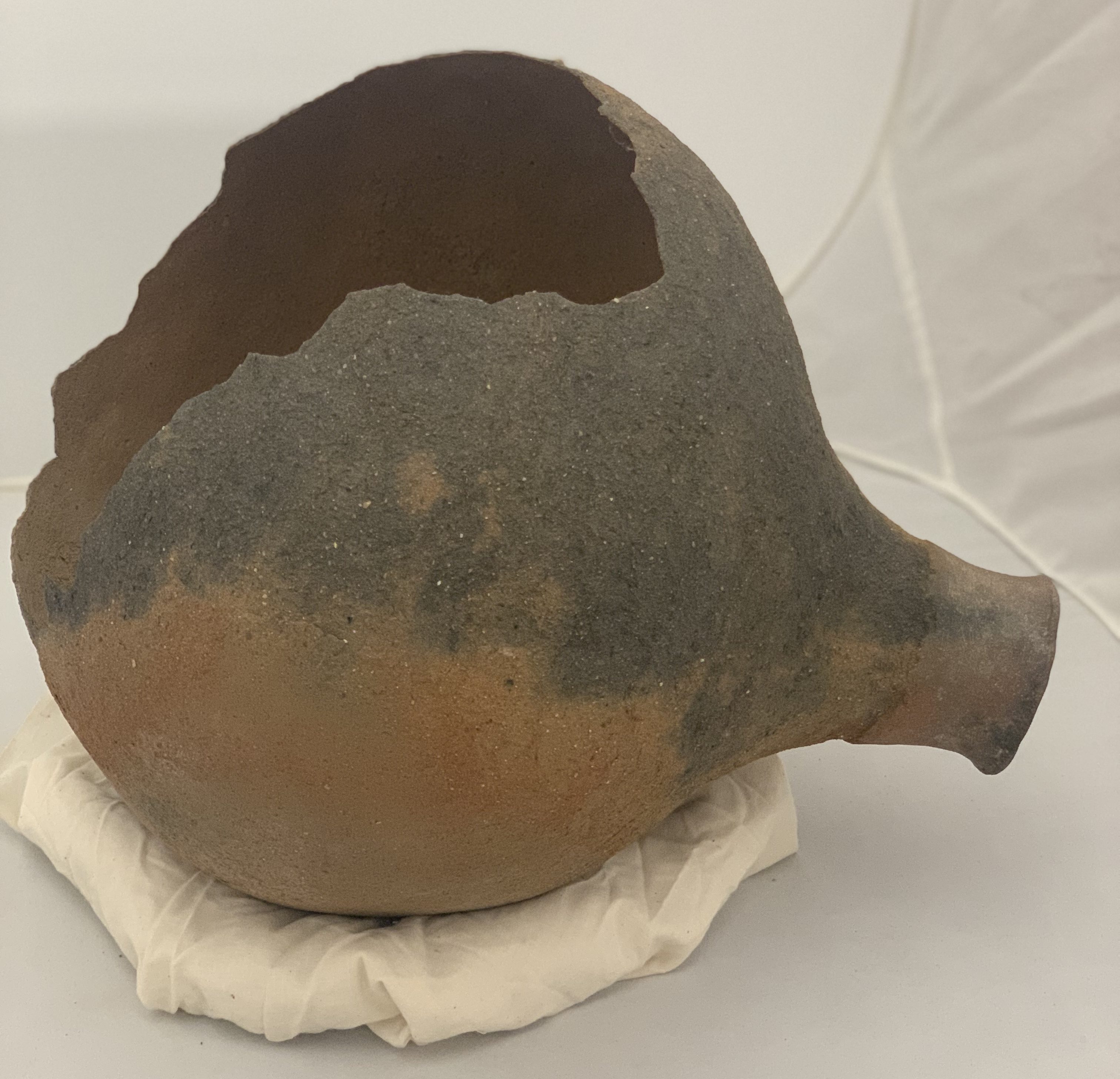 Ceramic vessels were highly valued by their owners, and if they were to break, there were many repair techniques that could be used. Lacing was a common repair technique, where cracks in vessels are repaired by drilling small holes on either side of the crack and then lacing together yucca (plant) fiber or sinew (animal tendons) to cover it. If a vessel was broken beyond repair, many times it would used for another purpose. For example, a broken water vessel that no longer used to hold water could be made into a bowl or pot for cooking.
Ceramic vessels were highly valued by their owners, and if they were to break, there were many repair techniques that could be used. Lacing was a common repair technique, where cracks in vessels are repaired by drilling small holes on either side of the crack and then lacing together yucca (plant) fiber or sinew (animal tendons) to cover it. If a vessel was broken beyond repair, many times it would used for another purpose. For example, a broken water vessel that no longer used to hold water could be made into a bowl or pot for cooking.
Field Trip to the Imperial Valley Desert Museum
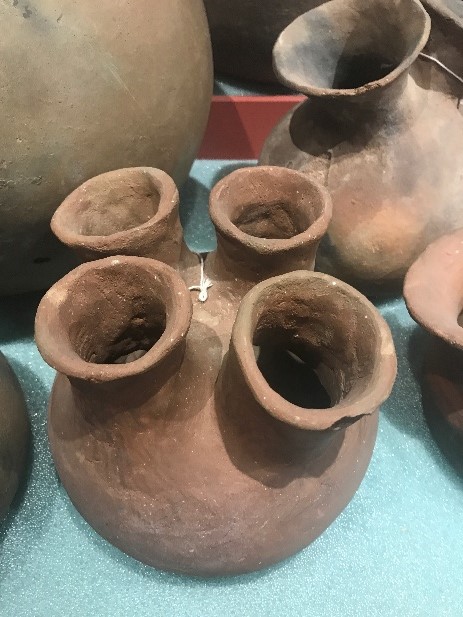
I recently had the opportunity to meet with Curator Kristin O’Lear and Executive Director Dr. David Breeckner for the Imperial Valley Desert Museum in Ocotillo, California, where they preserve and protect an incredible array of ceramic vessels. In the Spring of 2015, the Museum’s permanent collection of vessels, or ollas, went on display. This excellent display highlights the different sizes, shapes, and types of vessels found in the area. Many of them show original repair work, and because they preserve quite a few complete vessels, you really get a more detailed picture of how these incredible cultural resources were used.
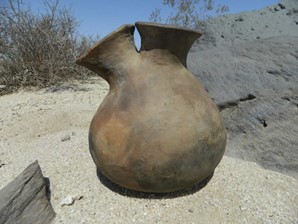
The type of vessels that really stood out to me was referred to as a two-neck or Wedding Olla. At the Center, we do not have any vessels that look like this. A two-neck olla is referred to as the Wedding Olla because the two necks represent the union of two people. After Southern California had been colonized, Indigenous cultures began selling ceramic pottery as tourist art. The two-neck olla production increased in the early 1900s once they become popular with tourists.
by Jessica McPheters, Collections Manager


